Overview
The article articulates how wineries can leverage their email lists to enhance marketing success and cultivate customer loyalty. It underscores the critical role of:
- Audience segmentation
- Personalized communication
- Multi-channel strategies
Data reveals that tailored messaging significantly boosts engagement and sales, thereby transforming casual buyers into devoted patrons.
Introduction
The wine industry is undergoing a transformative shift as vineyards harness the power of email marketing to connect with consumers and drive sales. By leveraging targeted email lists, wineries can create personalized campaigns that resonate with their audience, fostering loyalty and enhancing customer engagement. However, with numerous strategies available, how can vineyards effectively navigate this landscape to ensure sustainable growth and maximize their marketing potential? This article explores ten innovative ways to leverage email lists in the wine industry, revealing the secrets to turning casual buyers into devoted club members.
Enocap: Transform Your Marketing Strategy with Targeted Email Lists
Enocap empowers family-operated vineyards to revolutionize their marketing strategies by leveraging a wine industry email list, which is vital for establishing sustainable direct-to-consumer channels. By segmenting their audience based on preferences and behaviors, vineyards can craft personalized messages that resonate profoundly with their customers. This tailored approach not only boosts engagement but also significantly increases sales; research shows that can enhance transaction rates by as much as six times. Given that 93% of online consumers utilize discount codes, vineyards can effectively integrate these codes into their marketing campaigns to convert interest into sales.
Moreover, Enocap's data-driven insights enable vineyards to refine their communication strategies, ensuring they connect with the right audience at the optimal moment. Effective communication strategies encompass:
- Crafting compelling subject lines
- Employing dynamic content
- Executing automated campaigns that acknowledge client milestones, such as birthdays or anniversaries
By focusing on audience segmentation and avoiding purchased contact lists, wineries can enhance customer loyalty and retention, ultimately fostering sustainable growth by effectively utilizing the wine industry email list in an increasingly competitive market. Additionally, integrating strategic capital planning into their marketing initiatives can bolster long-term success and stability. Consider implementing a welcome message series to engage new subscribers effectively, as part of a comprehensive strategy to transform casual buyers into dedicated club members.
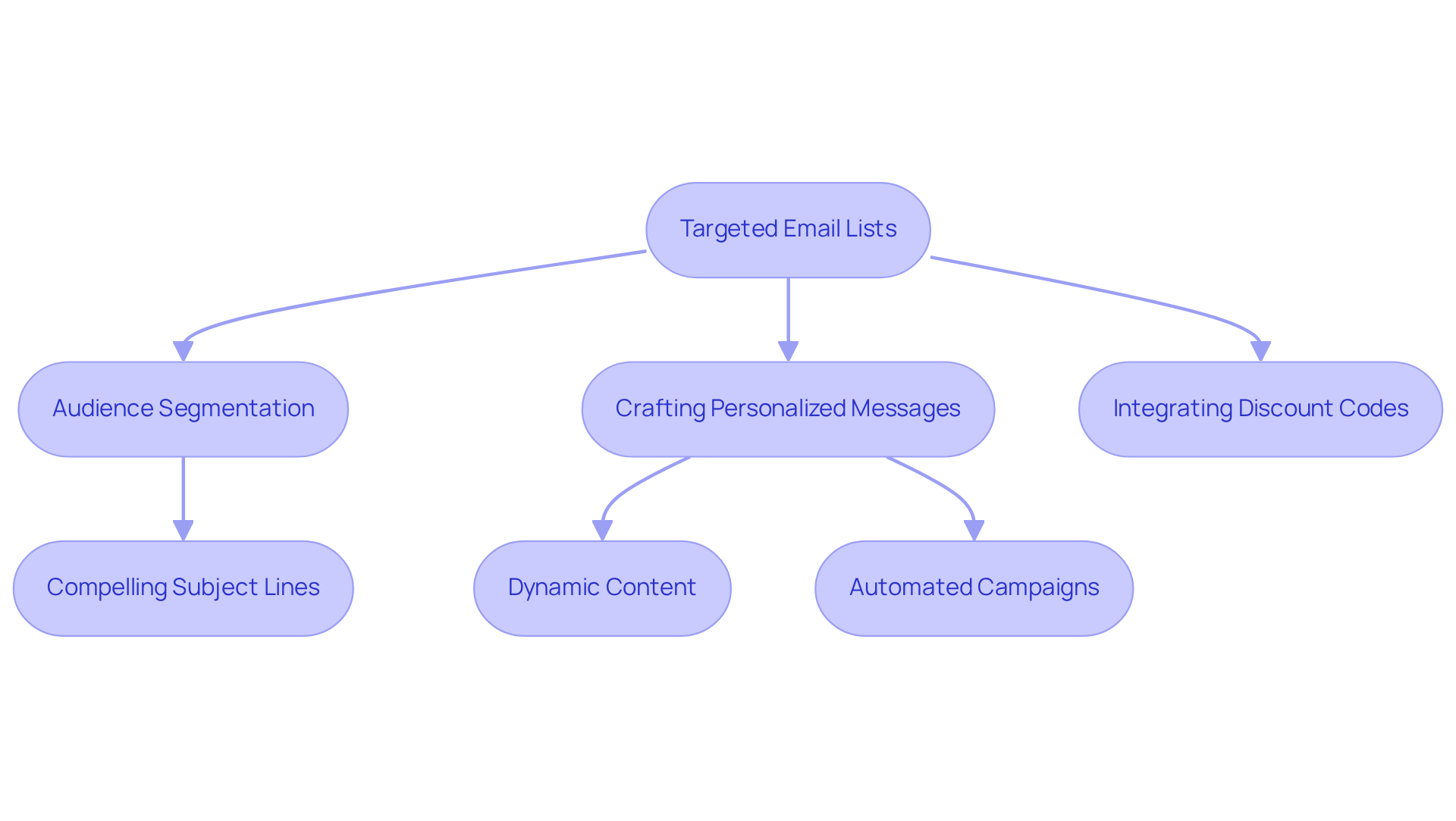
DataCaptive: Customize Your Wine Industry Email List for Targeted Engagement
Wineries can significantly enhance engagement by customizing their email lists, specifically their , based on various criteria, including demographics, purchase history, and engagement levels. This focused strategy enables the development of distinct groups, such as new clients, loyal patrons, and those interested in particular wine varieties. For instance, a winery might send tailored content to new subscribers, introducing them to the winery's story and offerings, while loyal customers could receive exclusive promotions or early access to new releases. This level of personalization not only fosters a deeper connection with recipients but also drives higher conversion rates.
Industry leaders emphasize the impact of targeted messaging in wine promotion. Eric Kunisawa, an acknowledged specialist in digital strategies, observes that effective messaging marketing is essential for fostering enduring connections with consumers. By leveraging data-driven insights, wine producers can craft compelling narratives that resonate with their audience, ultimately leading to increased loyalty and sales.
Statistics reveal that targeted messaging campaigns can produce impressive outcomes, with vineyards witnessing significant enhancements in engagement and conversion rates. For example, categorizing the wine industry email list according to client interests and demographics improves the relevance of messages, thereby increasing the likelihood of recipients responding favorably. This strategic method not only enhances immediate sales but also fosters long-term customer loyalty, positioning businesses for sustained success in a competitive market.
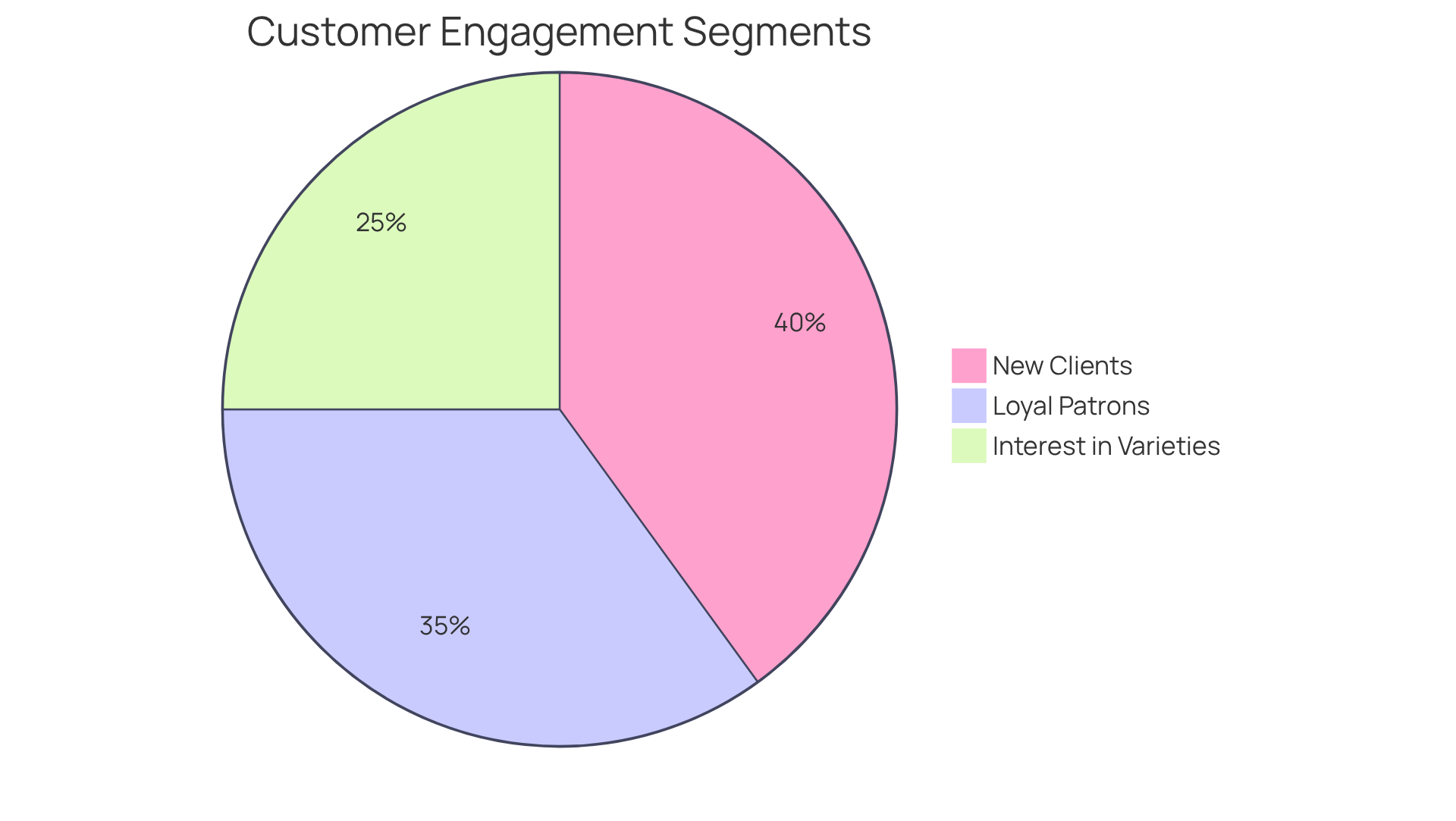
Blue Mail Media: Power Your Multi-Channel Marketing with a Wine Industry Email List
Integrating digital marketing with social media and other platforms is crucial for vineyards aiming to enhance their promotional efficiency and secure consistent DTC income. By leveraging a comprehensive wine industry email list, vineyards can implement cohesive campaigns that resonate across multiple platforms.
For example, promoting an upcoming event through email while concurrently sharing the same message on social media guarantees consistent communication and maximizes audience reach. This not only elevates brand visibility but also fosters stronger connections with consumers, making it crucial for developing a wine industry email list that transforms casual buyers into devoted club members.
Notably, studies indicate that 89% of consumers regularly use mobile devices to browse content online, underscoring the necessity for vineyards to engage individuals where they are most active. Furthermore, effective integration can lead to increased customer retention rates, as seamless interactions across channels nurture better relationships.
As the multichannel promotion sector is projected to expand significantly, vineyards that adopt these strategies will be well-positioned to thrive in a competitive landscape.
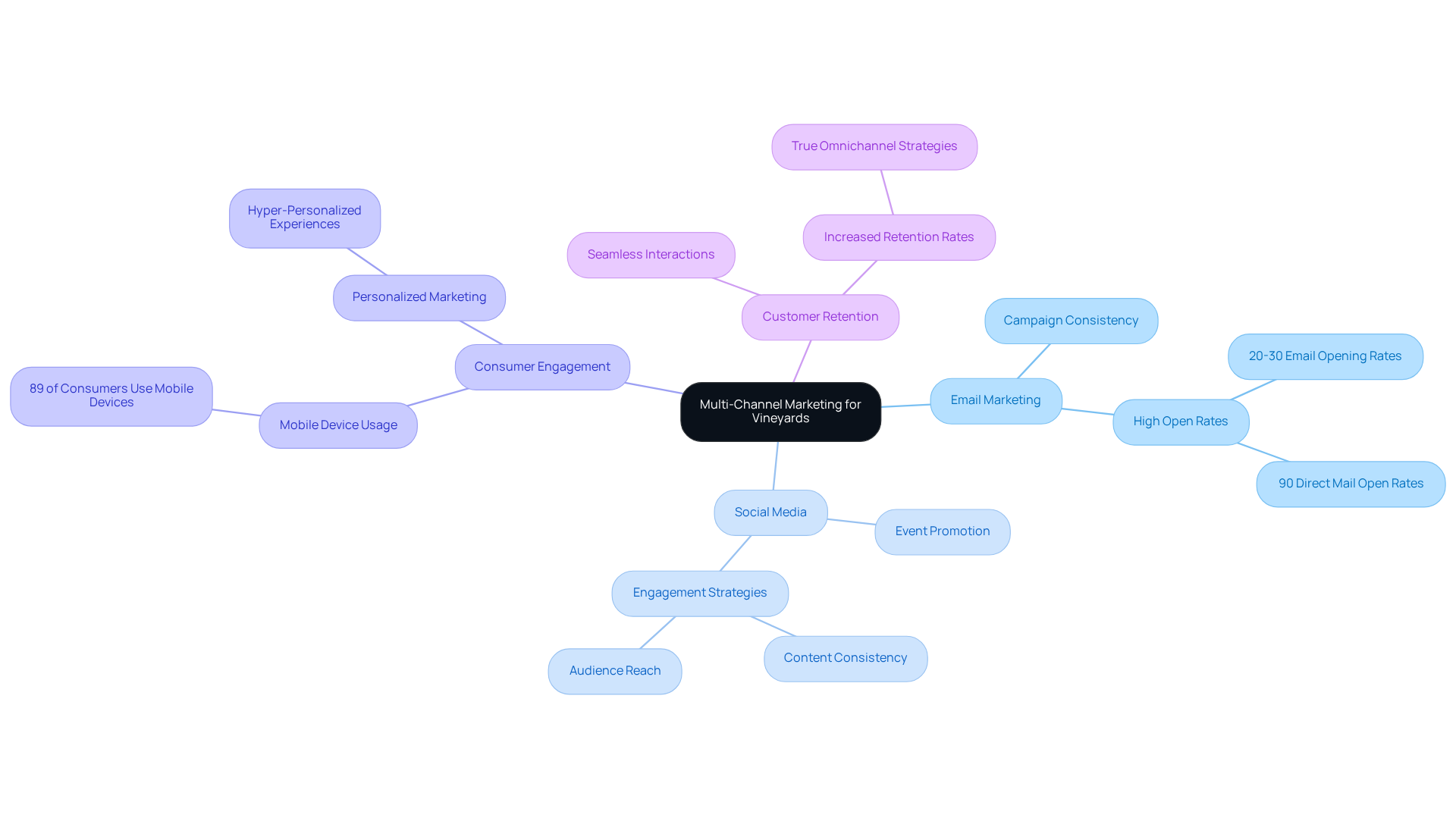
TargetNXT: Build Relevant Campaigns with a Segmented Wine Email List
Vineyards can significantly enhance their by utilizing segmentation to cater to diverse consumer profiles, which can help them build a robust wine industry email list, a strategy that aligns with Enocap's mission to transform family-owned vineyards. By analyzing client data, vineyards can identify key segments such as:
- Frequent buyers
- Seasonal purchasers
- Event attendees
This targeted approach enables producers to create campaigns that resonate with each group's unique interests, ultimately generating reliable direct-to-consumer revenue. For instance, a vineyard might offer exclusive promotions to loyal patrons while introducing new releases to casual purchasers, ensuring that every message is relevant and engaging.
The impact of segmentation is evident in the results achieved by vineyards that have adopted this strategy. One case study revealed that a winery employing targeted messaging experienced a threefold increase in email open rates, culminating in a swift sell-out of its seasonal rosé. This illustrates how personalized marketing can convert casual consumers into loyal patrons, a key objective of Enocap's strategic capital advisory services, which also encompass strategic capital planning for debt, equity, or acquisition opportunities.
Experts in the field emphasize the importance of customized campaigns, noting that personalization enhances client engagement and drives sales. Eric Kunisawa, Founder & CEO, states, "Personalization and specificity make messages from your establishment not only welcome but also more likely to generate a sale." By leveraging customer insights and technological tools like loyalty apps and wine club software, producers can cultivate meaningful interactions through their wine industry email list that foster loyalty and encourage repeat purchases. As the wine sector evolves, adopting a data-driven strategy for digital marketing will be essential for producers aspiring to thrive in a competitive landscape, improving their direct-to-consumer channels and ensuring sustainable growth.
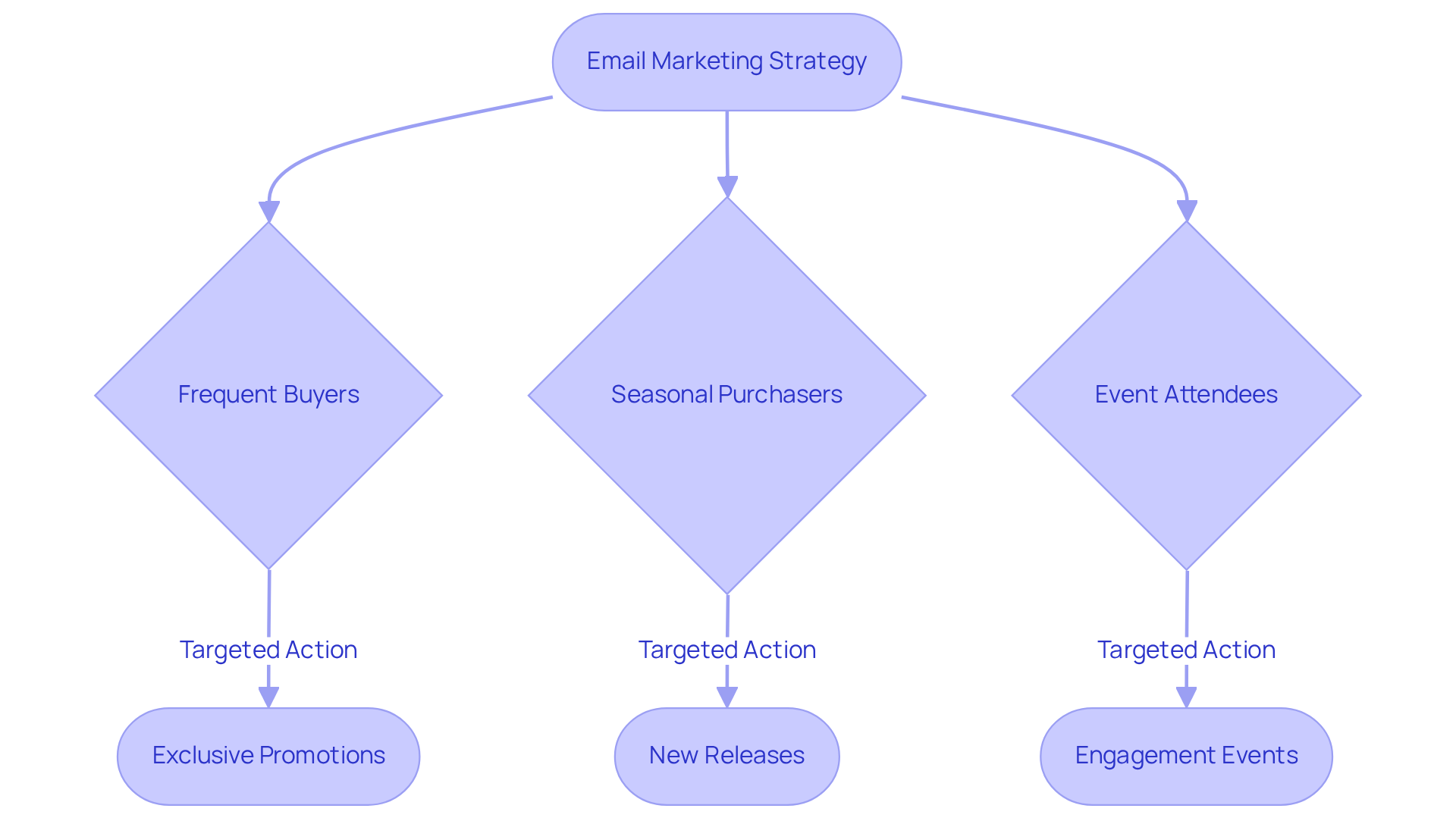
InfoCleanse: Bolster Revenue Generation with a Wine Industry Email Database
Utilizing a comprehensive wine industry email list can significantly enhance revenue generation for wine producers. By leveraging a diverse range of contacts, producers can expand their reach and engage potential customers who may not yet be familiar with their offerings. This strategy is particularly advantageous during new product launches or special occasions, as it enables producers to connect with a broader audience, thereby increasing the likelihood of boosting sales.
For instance, wineries that implement targeted communication campaigns often observe a substantial impact on their promotional efforts. With the in the wine sector at 31.3%, effective segmentation and personalization can further elevate engagement. Customized messages that include tailored suggestions based on previous purchases have been shown to increase open rates by 26%. This level of engagement is vital for fostering client loyalty and encouraging repeat purchases, transforming casual buyers into devoted club members.
Moreover, industry leaders emphasize the importance of electronic communication as a primary avenue for connecting directly with clients. As one DTC manager aptly stated, 'Email marketing is king.' This perspective is echoed by the WineDirect team, which found that 59% of marketers regard electronic communication as their most significant source of ROI. By strategically leveraging their wine industry email list, vineyards can enhance their visibility and cultivate meaningful relationships with their audience, ultimately driving sales and ensuring long-term success.
To further assist vineyards in establishing sustainable DTC channels, Enocap offers tailored strategies that focus on enhancing communication efforts, increasing client interaction, and utilizing data analysis for targeted campaigns. By implementing these tactics, vineyards can optimize their communication ROI and foster enduring connections with their clients.
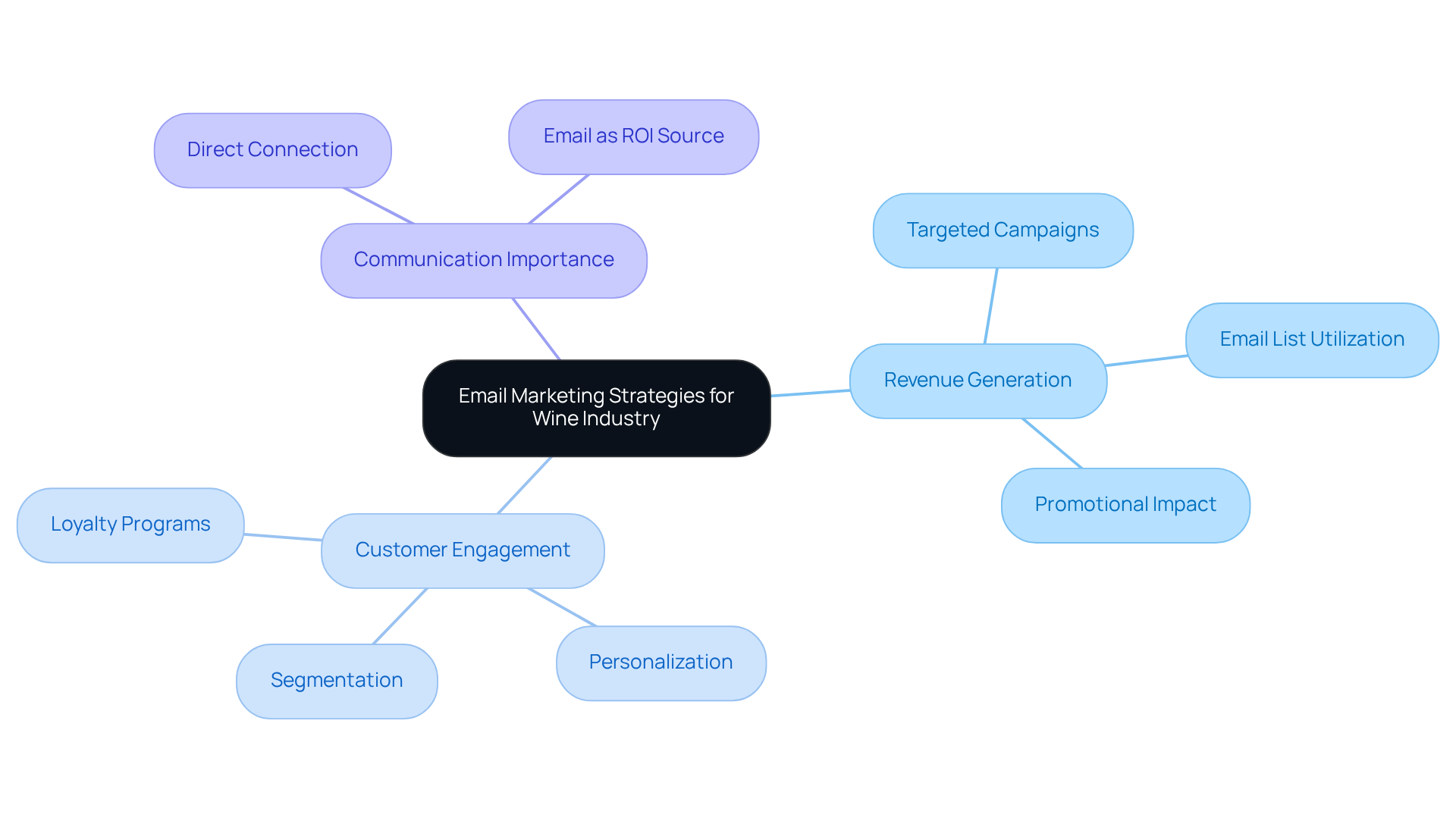
Wine Industry Network: Leverage Email Lists for Effective Marketing Strategies
The Wine Industry Network emphasizes the critical role of the wine industry email list in developing effective marketing strategies. By prioritizing electronic mail as a primary communication tool, vineyards can utilize their wine industry email list to keep their audience informed about new releases, events, and promotions. Regular engagement with subscribers through newsletters and targeted campaigns not only cultivates brand loyalty but also aligns seamlessly with Enocap's transformative direct-to-consumer strategies. This proactive approach not only encourages but also deepens connections with casual buyers, effectively transforming them into loyal club members. Furthermore, vineyards can leverage analytics to monitor engagement levels and refine their strategies, ensuring they are adeptly unlocking growth opportunities through tailored capital planning and compelling storytelling.
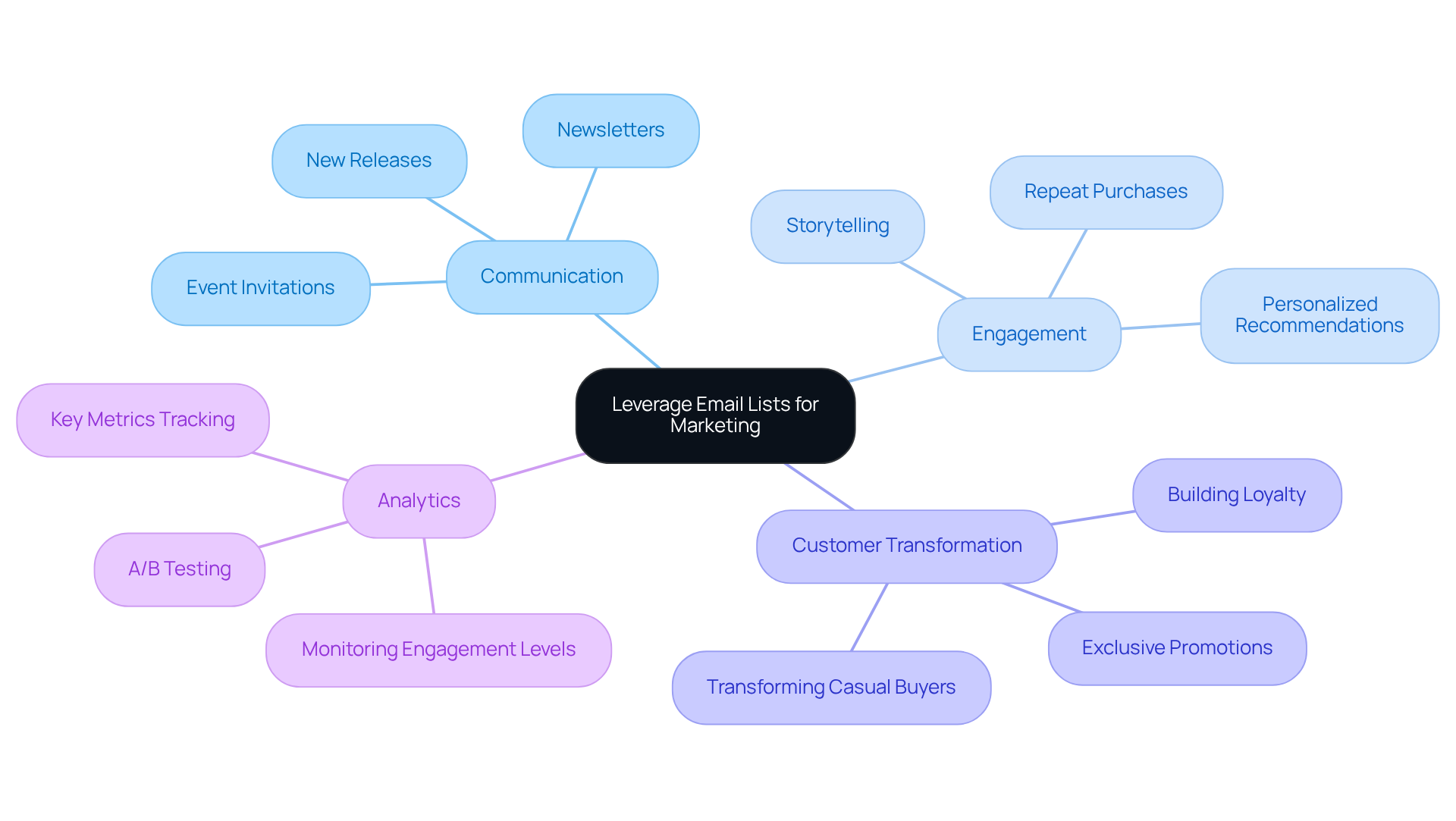
Winedata Researcher: Connect with Consumers through Targeted Email Marketing
Focused digital marketing is essential for vineyards aiming to engage customers effectively and establish lasting direct-to-consumer pathways that drive consistent growth in their wine industry email list. By analyzing consumer preferences and behaviors, wineries can use their wine industry email list to craft tailored communication campaigns that resonate deeply with their audience.
For instance, providing personalized recommendations based on previous purchases not only enhances the client experience but also encourages repeat business, transforming casual buyers into loyal club members. Research shows that existing clients tend to spend 31% more than new clients, highlighting the importance of nurturing these relationships through targeted communication strategies such as a wine industry email list.
This personalized approach not only fosters loyalty but also significantly amplifies the potential for . Jill Barth emphasizes that tailored communication enriches consumer experiences and loyalty, ultimately leading to increased sales.
Moreover, employing dynamic content in digital campaigns allows vineyards to customize message content for their wine industry email list according to subscriber preferences, thereby enhancing engagement and boosting conversions. By implementing these strategies and tracking critical communication metrics such as open rates and click-through rates, vineyards can forge significant connections with their clients, ensuring sustained success in a competitive landscape.
Additionally, the use of abandoned cart reminders can effectively recapture lost sales, adding another layer of engagement with consumers.
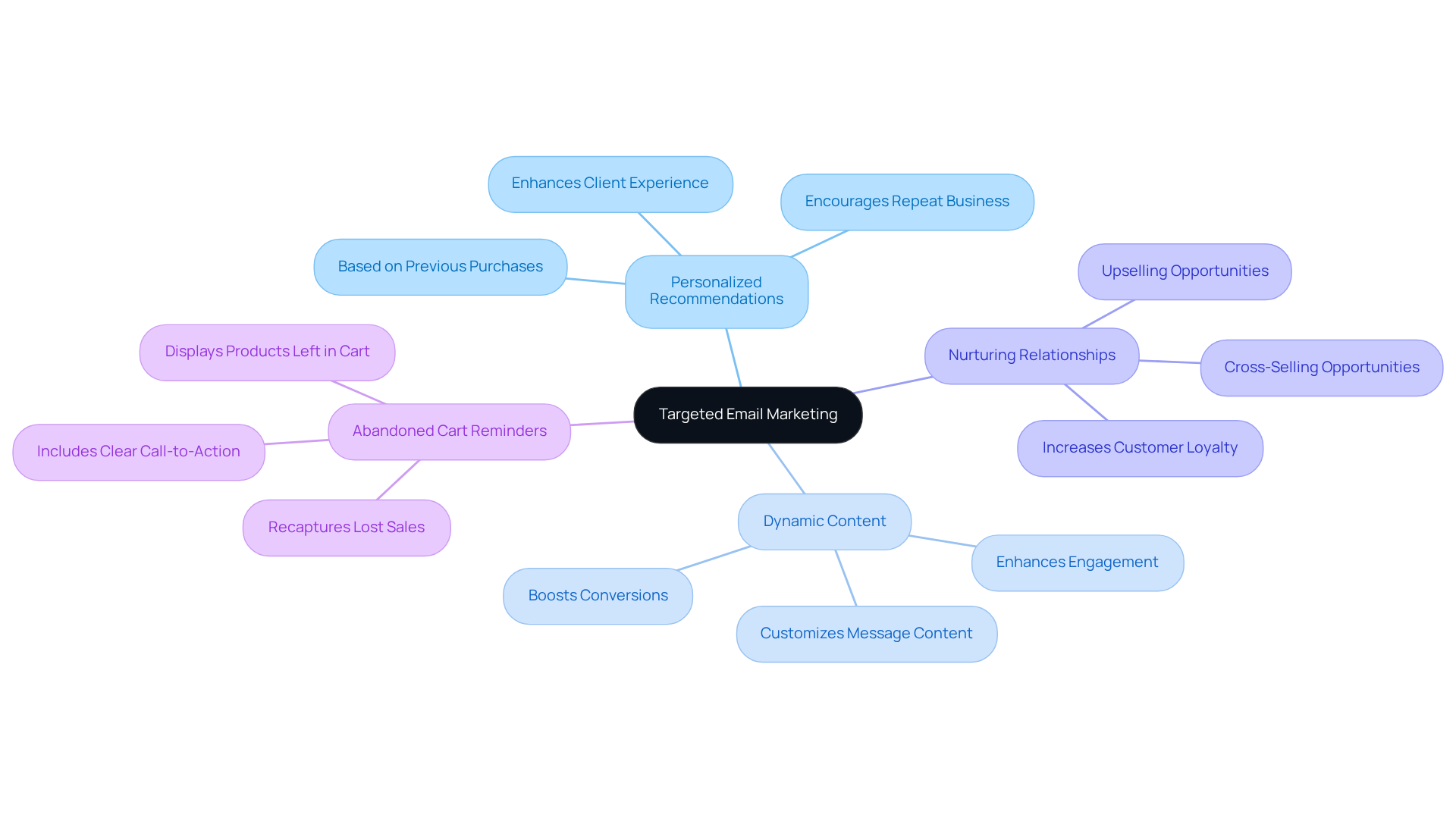
Wine Business: Stay Informed to Enhance Your Email Marketing Strategy
Staying aware of industry trends is crucial for vineyards aiming to enhance their communication strategies. By diligently tracking the latest trends in consumer preferences, technology, and marketing strategies, vineyards can adeptly adjust their campaigns based on insights from the wine industry email list to meet evolving demands. For instance, incorporating seasonal themes or trending wine varieties into the wine industry email list content not only captures consumer interest but also drives engagement. Statistics reveal that establishments utilizing seasonal promotions experience significant increases in sales during peak periods, as timely offers resonate deeply with customers.
Wineries such as Château Gassier have effectively transformed their promotional narratives to embrace , thereby attracting younger consumers through relatable content. This strategy underscores the importance of crafting messages that authentically reflect the winery's unique identity and values. Moreover, promotional experts emphasize that engaging subject lines are essential for enticing customers to open emails from the wine industry email list, with successful campaigns yielding an impressive average ROI of $42 for every $1 invested.
Regularly examining industry reports and analytics provides invaluable insights for refining promotional strategies. For instance, Famiglia Casadei witnessed a remarkable 24% rise in open rates after adopting new promotional tools focused on personalization and engagement. By leveraging these insights, vineyards can design targeted outreach campaigns using a wine industry email list that resonate with their audience, ultimately strengthening relationships and driving sales.
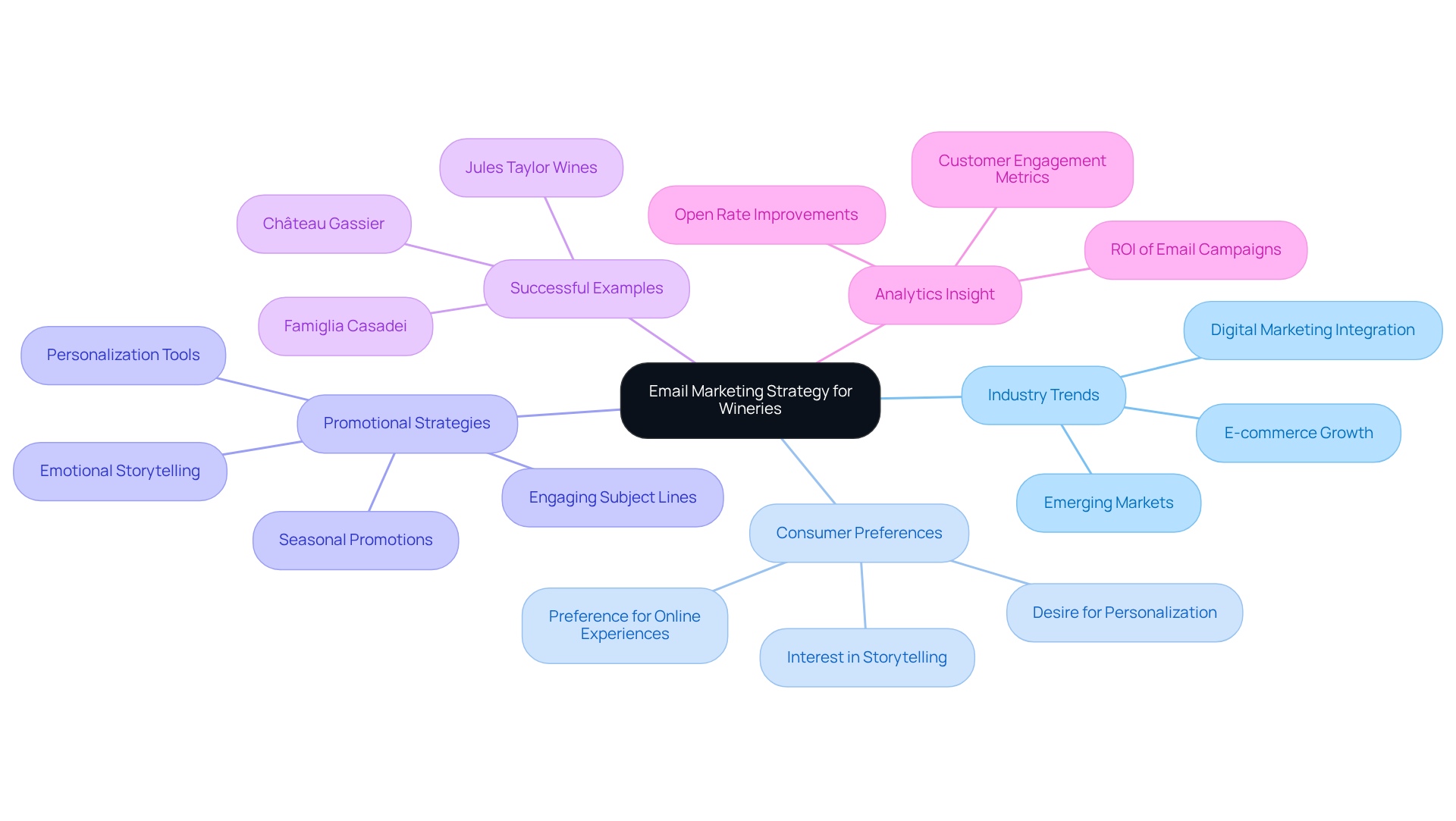
LinkedIn: Network and Share Best Practices for Wine Industry Email Marketing
LinkedIn serves as an essential platform for vineyards to connect and share best practices in communication strategies, particularly in direct-to-consumer approaches. By engaging with other industry professionals, wineries can exchange valuable insights and strategies that have effectively transformed casual buyers into loyal club members.
Conversations with peers and observations of industry influencers can inspire innovative outreach campaigns and promotional strategies that resonate with Enocap's approach to crafting compelling brand narratives. Moreover, sharing case studies and success stories fosters a collaborative environment that promotes continuous improvement in outreach efforts.
With digital communication yielding an impressive , vineyards are urged to adopt personalization and automation in their strategies to enhance engagement. As Tim Hill notes, electronic marketing is unmatched in forging direct connections and facilitating personalized communication with a brand's audience.
Additionally, audience segmentation empowers vineyards to tailor their campaigns, ensuring messages resonate with specific consumer groups. This targeted approach ultimately drives greater consumer engagement and loyalty, which are crucial for sustainable growth.
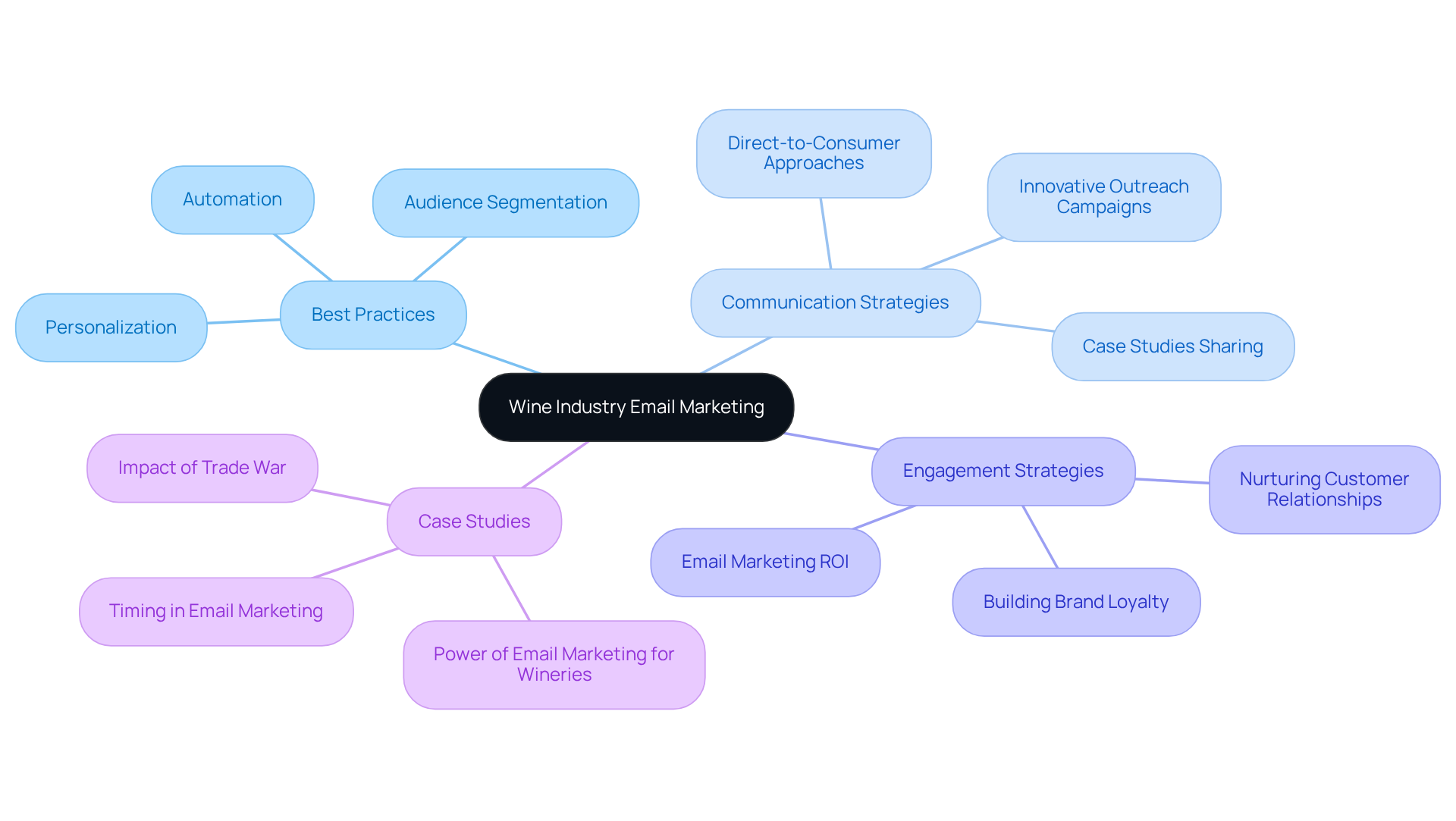
Enhance Customer Retention and Loyalty with a Wine Industry Email List
Enhancing client retention and loyalty is crucial for vineyards leveraging their email lists. By consistently engaging subscribers through personalized content, exclusive offers, and loyalty programs, wineries can foster a profound sense of belonging among their clientele via a wine industry email list.
For instance, implementing birthday discounts or providing early access to new releases not only makes patrons feel valued but also encourages repeat purchases. Research indicates that existing clients spend 31% more than new clients, underscoring the importance of nurturing these relationships.
Furthermore, wineries can convert casual buyers into dedicated club members by employing effective strategies that drive consistent growth in direct-to-consumer channels. Wineries like Stag's Leap Wine Cellars exemplify by personalizing client experiences and maintaining ongoing communication through tailored messages. Their commitment to understanding individual tastes and preferences significantly enhances client satisfaction and loyalty.
This approach not only strengthens emotional connections but also promotes long-term loyalty, positioning digital communication as a powerful tool for vineyards aiming to boost client engagement and retention. Additionally, integrating brand storytelling into email campaigns can deepen customer connections, while tracking key email performance metrics—such as open rates, which average 31.3% in the wine sector—can help producers gauge the effectiveness of their campaigns and implement data-driven improvements, ultimately supporting sustainable revenue growth.
Strategic capital planning can further bolster these initiatives by ensuring that wineries possess the necessary resources to invest in impactful marketing strategies.
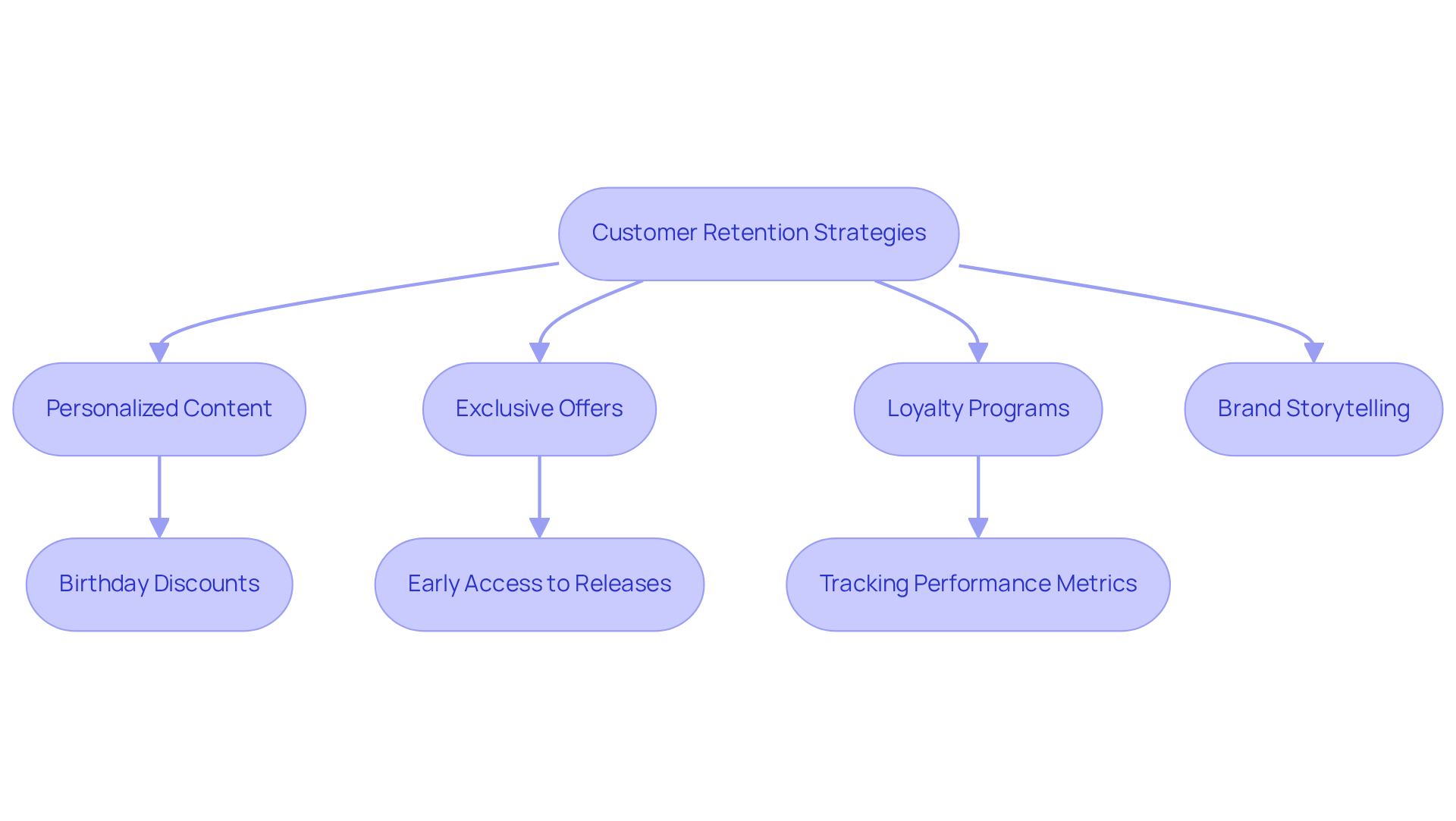
Conclusion
Leveraging a wine industry email list is a transformative strategy that can significantly enhance the marketing efforts of vineyards. By focusing on targeted communication and personalized engagement, wineries can build stronger connections with their customers, ultimately driving sales and fostering loyalty. This approach not only helps convert casual buyers into devoted patrons but also positions vineyards for sustainable growth in an increasingly competitive market.
The article outlines various effective strategies for utilizing email lists, such as:
- Audience segmentation
- Crafting personalized messages
- Integrating multi-channel marketing
Key insights emphasize the importance of understanding consumer preferences, employing data-driven tactics, and maintaining consistent communication to ensure that marketing efforts resonate with the target audience. By implementing these strategies, vineyards can witness substantial improvements in engagement, conversion rates, and customer retention.
As the wine industry continues to evolve, embracing these email marketing techniques is essential for success. Wineries are encouraged to invest in understanding their audience and refining their communication strategies, as these efforts will not only enhance immediate sales but also cultivate long-term relationships with customers. By prioritizing targeted engagement through well-crafted email campaigns, vineyards can unlock new opportunities for growth and solidify their presence in the market.
Frequently Asked Questions
What is Enocap and how does it help vineyards?
Enocap empowers family-operated vineyards by providing a wine industry email list that helps them establish sustainable direct-to-consumer channels through targeted marketing strategies.
How can vineyards benefit from audience segmentation?
By segmenting their audience based on preferences and behaviors, vineyards can create personalized messages that enhance customer engagement and significantly increase sales, with research indicating that personalized messages can boost transaction rates by up to six times.
What strategies can vineyards use to improve their communication?
Effective communication strategies include crafting compelling subject lines, employing dynamic content, and executing automated campaigns that recognize client milestones, such as birthdays or anniversaries.
Why is it important for wineries to avoid purchased contact lists?
Avoiding purchased contact lists helps wineries enhance customer loyalty and retention, fostering sustainable growth by effectively utilizing their wine industry email list in a competitive market.
How can wineries customize their email lists for better engagement?
Wineries can customize their email lists based on demographics, purchase history, and engagement levels, allowing them to send tailored content to different groups, such as new clients and loyal patrons.
What are the benefits of targeted messaging in wine promotion?
Targeted messaging fosters enduring connections with consumers, leading to increased loyalty and sales, as it improves the relevance of messages and enhances engagement and conversion rates.
How can vineyards integrate digital marketing with other platforms?
By leveraging a comprehensive wine industry email list, vineyards can implement cohesive campaigns across multiple platforms, such as promoting events through email and social media to ensure consistent communication and maximize audience reach.
Why is mobile engagement important for vineyards?
With 89% of consumers regularly using mobile devices to browse content online, engaging individuals on their preferred platforms is essential for building relationships and retaining customers.
What is the projected growth for multi-channel promotion in the wine industry?
The multi-channel promotion sector is expected to expand significantly, and vineyards that adopt these strategies will be well-positioned to thrive in a competitive landscape.




